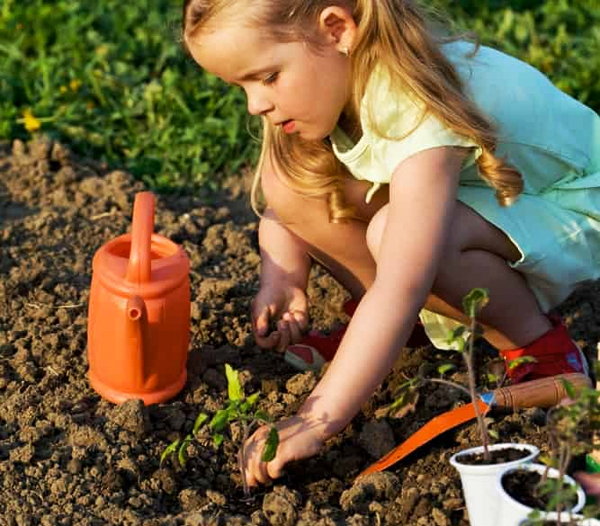
Chapter 36
"How to" for a Beginning Grower
If you are just beginning to grow tomatoes, it is not a bad idea to start slowly and keep it simple. Later on, after you have some experience and want to step it up a bit, it won't be difficult to do so. The following is a simple way to start with many of the thoughts coming from Gregory Flynn of Gaithersburg, Maryland.
1. Find a sunny place. This can be harder than you think. If you must plant right next to your house, don't plant on the north or west side. Morning sun is preferred to evening sun. The first thing to do is to get a good feel for where the sun is in your yard, then decide where to plant. You need sun.
2. Plan a simple garden of 3 tomato plants. Put your three plants in a straight row about 3 feet apart. It isn't necessary to till an entire garden for 3 plants. Line them up in an east to west direction. Dig a hole about 2.5 feet wide and 2.5 feet deep in each of the 3 plant locations. Your garden should be slightly raised by incorporating organic materials into the soil. This will allow it to drain better and warm up earlier in the spring.
3. Work in soil amendments. For most soil, all you will need for three plants is a big bag of peat moss, three, forty pound bags of composted manure, and 1/2 cup of ground lime per hole. Distribute these evenly in the three holes and mix them up with your soil until you have a bed that is raised about a foot.
4. Buy starter tomatoes. Go to a garden center and get three varieties of tomato plants, one early, one mid-season, and one large late season. Some suggestions might be Early Girl, Champion, and Supersteak. Plant these in the three holes. Do this by carefully removing the tomato plants from their containers, and placing them in the holes so that the soil level is just above where the soil level was in the pot. Firm up the soil around the plant and water it thoroughly. Make a one foot indentation around the plant to catch and hold water.
5. Mulch your plants for weed prevention. If you have bricks or stones, place them around the edge of each tomato area to prevent grass from encroaching. Place mulch around each tomato plant to preserve moisture and to prevent weeds. Use dried grass clippings, straw, old newspapers, or black plastic. If you use plastic or newspapers, and feel they are unsightly, put grass clippings on top. If you do this properly you will need less watering and no weeding.
6. Support your tomato plants. If you make good tomato cages, your life will be easy and your tomatoes productive. The best possible cage is a 2.5 foot (or wider) diameter, 5 foot tall cage made from common cement reinforcement wire. The holes in the cage are large enough that you can reach in, but the cage is still sturdy. Put this around the plants and place 3 or 4 stakes around the cage to hold it in place. Tie the cage to the stakes. Rebar makes fine stakes. If you don't want to make cages, then use some wooden stakes and tie your vines onto the stakes with garden twine.
7. Water properly. Don't overdo this. Water your plants three times a week for up to 2 weeks after the initial planting. Use a watering can. Put up to one gallon of water on at each watering. After the first 2 weeks, you need water only weekly or biweekly depending on the weather. This promotes root growth and makes the plants more survivable during the summer. They will even taste better. Don't drown your plants. If you question if the soil is moist, stick your fingers in to check.
8. Talk to tomato growers in your neighborhood. (They are the ones with tomato plants growing in their yards.) Watch them. Talk to them. Ask questions. Learn from them. There are lots of people around who grow tomatoes. You will even find them at parties and other gatherings. You probably even work with some. They will love to tell you about their tomatoes.
9. Read about tomatoes. When you see a tomato article, read it. Browse the internet for information. Go to Gardenweb.com and check out the Tomato Growers Forum. Visit Tomatoville.com where more tomato growers hang out. Good luck.
